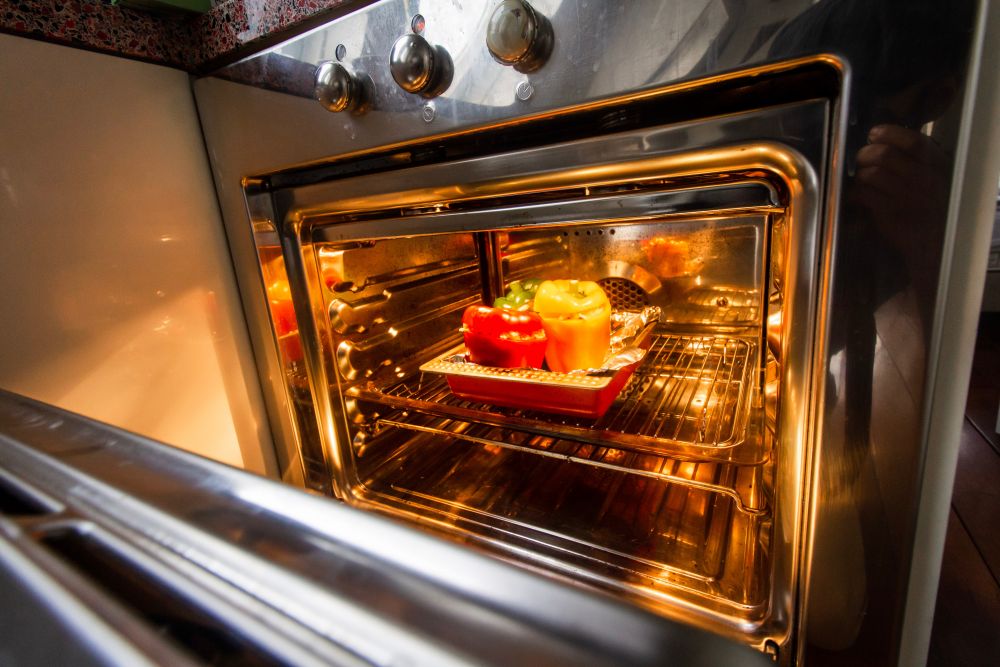What Is a Convection Microwave and Is It Worth It?
Microwaves were first introduced in 1965 for domestic use, but until the 1970s, they were not affordable. Since that time, in most homes worldwide, the microwave oven has become a staple, and we rely on these appliances to reheat leftovers effectively, make popcorn, or defrost frozen products.
When browning and crisping food, microwave convection ovens are better and result in fast cooking. Those who have limited space in their kitchens or are looking for a more compact option to help prepare meals may want a convection mode to be considered, but are convection microwaves worth it? Yes, it is worth buying a convection microwave.

If you have space limitations and your kitchen size does not allow you to have a traditional microwave oven, or if you want to replace your old microwave with a new appliance with additional features, then you should buy this fantastic kitchen appliance.
Table of Contents
What is a Convection Microwave?
A convection microwave is a hybrid appliance that uses microwaves to cook and reheat your food, but you can also use it for baking, roast, or crisp your meals using the fan and heating coil built-in.
It has bonus features: a heating-coil and fan. In addition to a fan, a microwave convection oven has an additional heating feature that transfers or circulates the hot air through the food, maintaining its Flavor uniformly and adding a pleasant texture as well.
How Does a Convection Microwave Work?
Microwave technology has revolutionized both the food and appliance industries and can be found in over 90 per cent of our nation’s homes today. Several modes of convection microwaves can act as a standalone microwave or as a traditional oven, with the ability to switch between modes to reduce your favourite dishes’ cooking time.
The magnetron converts energy into microwaves in the microwave mode, guided towards the food, and causes movement of the water molecules located within. This vibration and the resulting friction produce heat, which cooks the food or warms it.
However, microwaves react poorly to metal, so if you use metal trays or leave a fork in your food, they may contribute to sparks. On the other side, it behaves more like an oven when you use the convection settings on your convection microwave.
The heating unit converts energy to ambient heat in the microwave. The fan is the cool trick of convection cooking: it blows the hot air into the food to cook it faster.
The brown, crispy outside coating on roast chicken and baked goods is created by convection cooking.
Types of Microwave Convection oven
Microwave ovens combined with convection technology can be of below two types:
- Autonomous: – These microwave convection ovens are typically placed on the kitchen counter. They are very bulky and heavy, and for these kinds of ovens, you need extra space on your countertop.
- Built-In:- These models are another sort of microwave convection oven type. For a compact kitchen, these ovens are specially designed, and they are perfect for a modular kitchen. In your kitchen, they don’t take up much room or extra space on your countertop.
Difference between Conventional and Convectional Technology
Microwave technology utilizes conventional technology that uses electromagnetic waves to vibrate the heat-generating water molecules in your food. Microwave ovens are high-speed and are ideal for commercial kitchens where the kitchen is always busy, and quick-cooking is required.
Convection oven technology uses heating elements with powerful fans that circulate hot air around the appliance and ensure that your food is evenly cooked. These ovens are helpful in slow cooking as you get high precision while adjusting the temperatures.
There are basically below differences between microwave and convection oven:
- While the convection oven allows low-temperature cooking, the microwave oven provides quick heating.
- Microwave ovens typically support reheating, boiling, defrosting while preheating, roasting, baking, and crisping are only possible in a convection oven.
- The convection oven works either on electricity or gas, but the microwave oven works on electricity.
- The food is cooked with electromagnetic radiation in microwaves, but the oven uses hot air to reheat your meal.
- The cooking ability of a microwave oven usually is lower than in convection ovens.
Advantages of Microwave Convection Oven
The use of a microwave convection oven instead of other ovens has many benefits, and these are listed as below:-
- Versatility:- The microwave convection oven makes it possible to cook a wide variety of dishes that you can’t prepare with a standard microwave. Fish, pork, baked cakes, cookies, pizza, meringue, and many more dishes can be prepared.
- It uses less energy than a traditional convection oven.
- This appliance is suitable for small spaces, including vacation homes or tiny homes.
- Faster Cooking:- It cooks the food faster when compared to other ovens.
- Enhanced Flavor: – The microwave convection oven uses radiofrequency and hot air circulation, which cooks the food uniformly and efficiently and preserves the moisture within your food products, which increases the taste of your dishes.
Are Convection Microwaves Worth It?
If you don’t like a lot of crispy and brown textured food and don’t like baking, the answer is yes. If you live in a small room but want to cook more, it would be ideal for you to have a convection microwave. These convenient appliances hardly take up more space than a traditional microwave. However, from popcorn to a Sunday roast, they can cook anything.
On the other hand, a convection microwave is not a must if you already have a full-size kitchen, complete with a microwave and an oven that works. With a microwave convection oven, you get auto-programmed functions, convection rack for baking, multi-stage cooking, steam washing, preheating, roasting, and many more features. A convection microwave is a compact way to improve your kitchen’s capabilities if you frequently cook large meals.